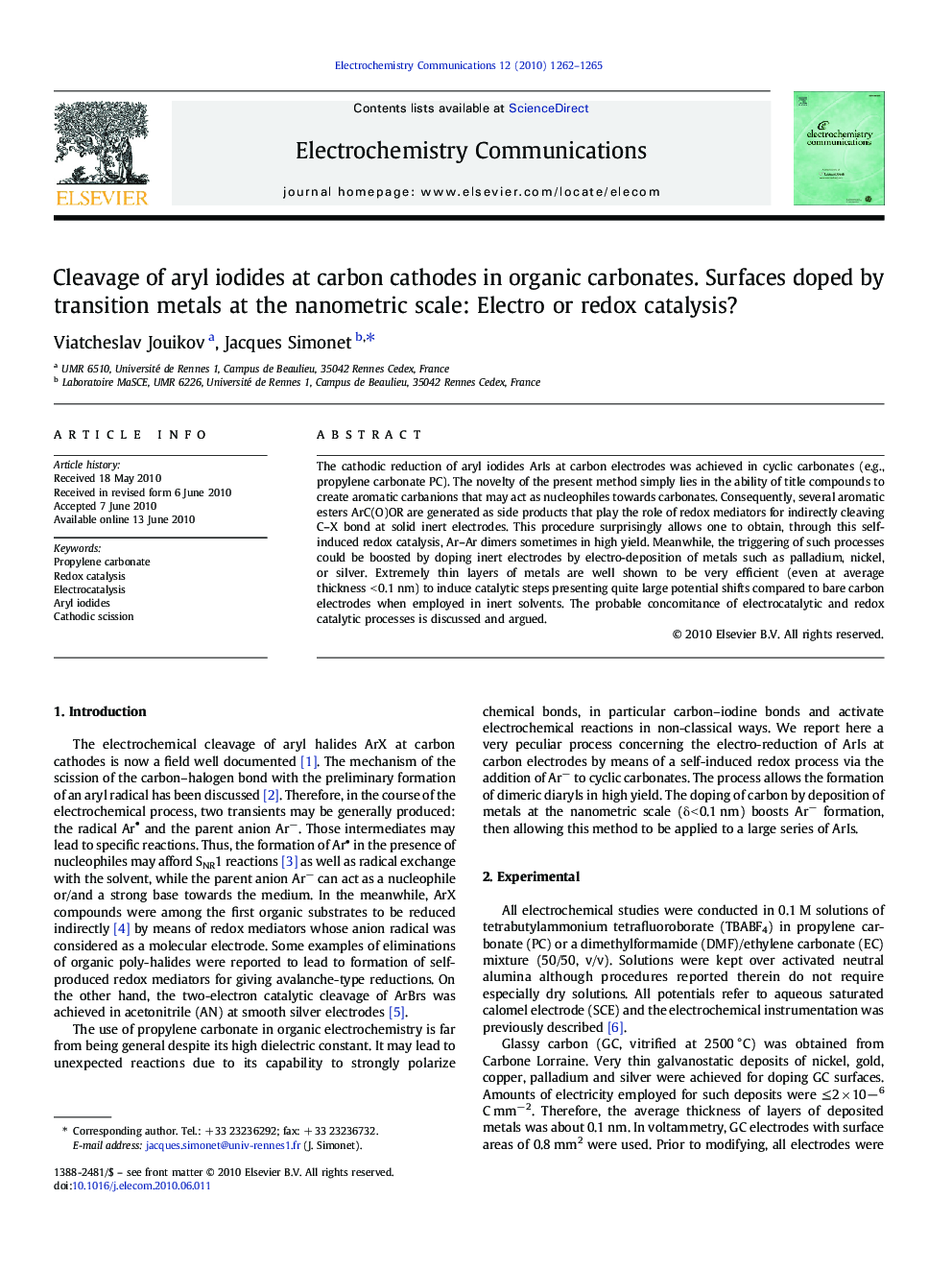| Article ID | Journal | Published Year | Pages | File Type |
|---|---|---|---|---|
| 180461 | Electrochemistry Communications | 2010 | 4 Pages |
The cathodic reduction of aryl iodides ArIs at carbon electrodes was achieved in cyclic carbonates (e.g., propylene carbonate PC). The novelty of the present method simply lies in the ability of title compounds to create aromatic carbanions that may act as nucleophiles towards carbonates. Consequently, several aromatic esters ArC(O)OR are generated as side products that play the role of redox mediators for indirectly cleaving C–X bond at solid inert electrodes. This procedure surprisingly allows one to obtain, through this self-induced redox catalysis, Ar–Ar dimers sometimes in high yield. Meanwhile, the triggering of such processes could be boosted by doping inert electrodes by electro-deposition of metals such as palladium, nickel, or silver. Extremely thin layers of metals are well shown to be very efficient (even at average thickness < 0.1 nm) to induce catalytic steps presenting quite large potential shifts compared to bare carbon electrodes when employed in inert solvents. The probable concomitance of electrocatalytic and redox catalytic processes is discussed and argued.
